Articles > Geography
Trying the top Arizona cities on US State Largest Cities – Choose State & Number? Here are the top 10 to get you started.
1. Phoenix, AZ (Population: 1,650,070)
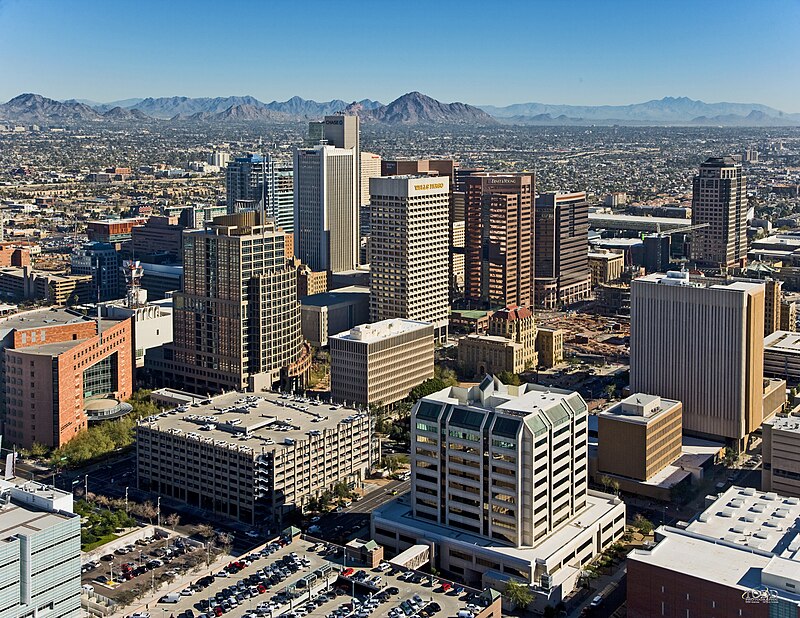
Phoenix, the capital and largest city of Arizona, is the fifth most populous city in the United States. Located in the Sonoran Desert, it is famous for its year-round sunshine and dramatic desert landscapes. Phoenix has transformed from a small agricultural town into a sprawling metropolitan hub, home to over 4.8 million residents in the greater metro area. Its economy is diverse, with strengths in technology, healthcare, real estate, and finance. The city is also a sports powerhouse, hosting professional teams in all major leagues, including the Phoenix Suns, Arizona Cardinals, and Arizona Diamondbacks. Outdoor enthusiasts enjoy hiking Camelback Mountain, exploring the Desert Botanical Garden, and nearby day trips to the Grand Canyon. Phoenix’s vibrant arts and dining scene continues to grow, reflecting its cultural diversity and modern identity.
Interesting Fact:
Phoenix is the hottest major U.S. city, with summer highs frequently exceeding 110°F.
2. Tucson, AZ (Population: 547,239)
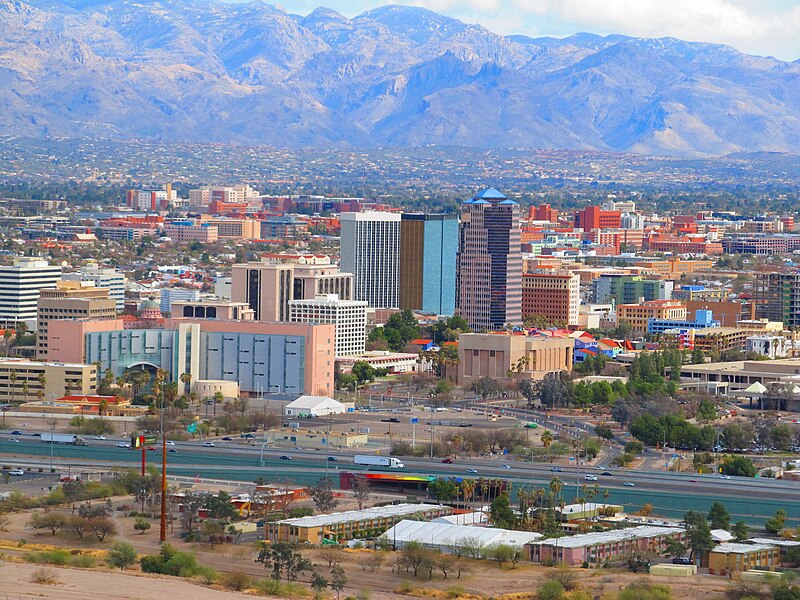
Tucson, located in southern Arizona, blends desert landscapes with rich cultural heritage. It is home to the University of Arizona, which drives research, athletics, and student life in the city. Tucson is recognized for its strong Mexican-American influence, visible in its cuisine, festivals, and architecture. The city is surrounded by five mountain ranges, offering countless opportunities for hiking, cycling, and stargazing. Tucson has even been named a UNESCO City of Gastronomy for its blend of Native American, Mexican, and pioneer culinary traditions. Its historic downtown has been revitalized with art galleries, restaurants, and live music venues. With a growing tech and aerospace presence, Tucson balances its historic roots with modern innovation.
Interesting Fact:
Tucson averages over 350 days of sunshine each year, making it a stargazer’s paradise.
3. Mesa, AZ (Population: 511,648)
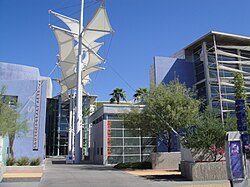
Mesa, part of the Phoenix metropolitan area, is the third-largest city in Arizona. Known for its family-friendly atmosphere, it is home to cultural landmarks like the Mesa Arts Center and the Arizona Museum of Natural History. Outdoor recreation is abundant, with the nearby Salt River offering tubing and kayaking, and the Superstition Mountains providing scenic hikes. Mesa also hosts Major League Baseball spring training for the Chicago Cubs and Oakland Athletics, attracting thousands of fans each year. The city’s economy is fueled by aerospace, education, and healthcare, and its suburban growth continues to expand rapidly. Mesa provides a mix of suburban comfort, cultural life, and access to the Arizona wilderness.
Interesting Fact:
Mesa is the largest suburban city in the U.S. by land area, covering over 138 square miles.
4. Chandler, AZ (Population: 280,167)
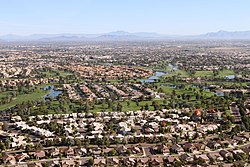
Chandler, located southeast of Phoenix, is a rapidly growing city known for its technology and innovation. It is a hub for semiconductor manufacturing, with Intel operating major facilities in the area. Chandler’s revitalized downtown features shops, restaurants, and cultural events, while Tumbleweed Park and Veterans Oasis Park highlight the city’s dedication to outdoor spaces. Festivals such as the Ostrich Festival celebrate the city’s agricultural past, while its thriving economy reflects its modern future. Chandler is considered one of the best places to live in Arizona thanks to its strong schools, safe neighborhoods, and expanding business opportunities.
Interesting Fact:
Chandler’s Ostrich Festival began in the 1980s, celebrating its early history as a center of ostrich farming.
5. Gilbert, AZ (Population: 275,411)
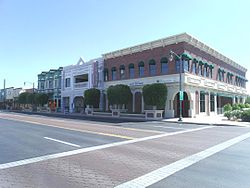
Gilbert, once known as the “Hay Shipping Capital of the World,” has transformed into a thriving suburban city. Located southeast of Phoenix, Gilbert has grown rapidly over the past few decades, becoming one of the fastest-growing cities in the nation. Its downtown Heritage District has been revitalized with dining, shopping, and entertainment, while outdoor amenities include the Riparian Preserve at Water Ranch. Gilbert emphasizes community living, with safe neighborhoods and high-ranking schools attracting families. Its economy includes healthcare, education, and technology, complementing its suburban growth. Despite its rapid development, Gilbert has preserved a sense of community and small-town charm.
Interesting Fact:
Gilbert was once a small farming town with fewer than 2,000 residents as recently as 1970.
6. Glendale, AZ (Population: 253,855)
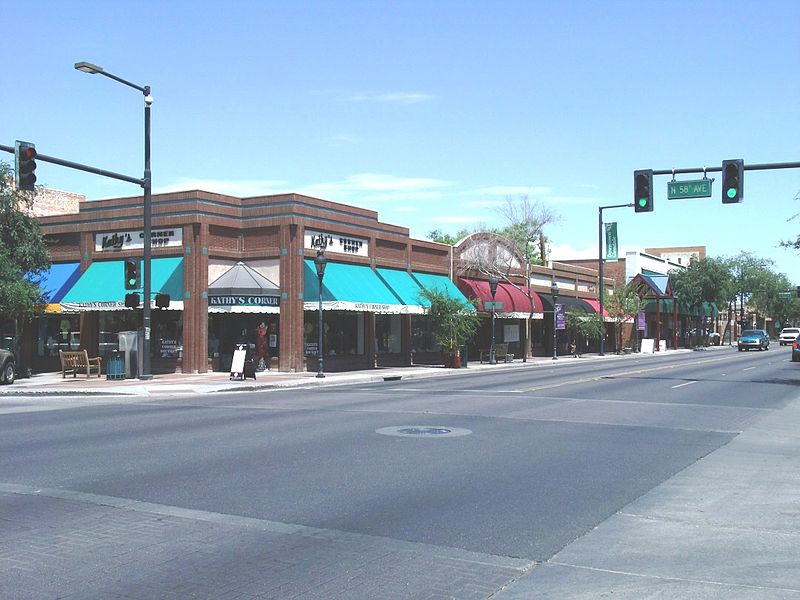
Glendale, northwest of Phoenix, is best known for its sports and entertainment attractions. The city is home to State Farm Stadium, where the Arizona Cardinals play and the Super Bowl has been hosted multiple times. Glendale also features the Gila River Arena, formerly home to the Arizona Coyotes hockey team. Beyond sports, Glendale has a reputation as “Arizona’s Antique Capital,” with historic downtown shops and cultural events. Its location in the Phoenix metro area makes it a hub for retail and entertainment, while offering suburban living for families. Glendale continues to thrive as both a sports destination and residential community.
Interesting Fact:
State Farm Stadium in Glendale hosted the Super Bowl in 2008, 2015, and 2023.
7. Scottsdale, AZ (Population: 244,394)
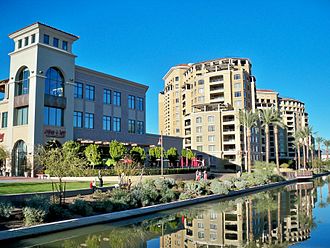
Scottsdale, known as “The West’s Most Western Town,” combines luxury living with desert landscapes. The city is famous for its resorts, spas, and golf courses, attracting visitors from around the world. Old Town Scottsdale offers shopping, dining, and nightlife, while the Scottsdale Museum of Contemporary Art and Taliesin West (Frank Lloyd Wright’s winter home) showcase its cultural side. Scottsdale’s economy thrives on tourism, healthcare, and technology, and its scenic desert preserves offer endless hiking and biking opportunities. With its mix of Southwestern charm and modern sophistication, Scottsdale is one of Arizona’s most dynamic cities.
Interesting Fact:
Scottsdale hosts the annual Waste Management Phoenix Open, one of the largest-attended golf tournaments in the world.
8. Peoria, AZ (Population: 198,750)
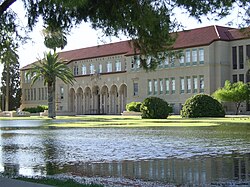
Peoria, stretching across Maricopa and Yavapai counties, is a growing city known for its sports and recreational opportunities. The Peoria Sports Complex hosts spring training for the San Diego Padres and Seattle Mariners, making it a seasonal hotspot for baseball fans. The city also boasts Lake Pleasant Regional Park, offering boating, fishing, and camping in the desert. Peoria’s strong schools, safe neighborhoods, and suburban amenities make it attractive for families. With a balance of outdoor adventure and suburban comfort, Peoria continues to grow as part of the Phoenix metropolitan area.
Interesting Fact:
Peoria is named after Peoria, Illinois, the hometown of its early settlers.
9. Tempe, AZ (Population: 189,834)
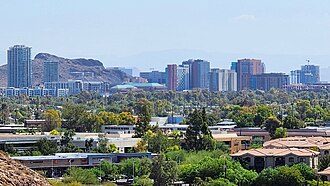
Tempe, located just east of Phoenix, is best known as the home of Arizona State University, one of the largest universities in the nation. The university contributes greatly to Tempe’s youthful and vibrant culture, with Sun Devil Stadium and other facilities at the center of local life. Tempe Town Lake is a centerpiece for outdoor recreation, concerts, and festivals. The city has also developed as a hub for technology and business, attracting major employers. Its entertainment district on Mill Avenue offers nightlife, dining, and live music, reinforcing its reputation as a lively college town with big-city amenities.
Interesting Fact:
Tempe Town Lake was created in 1999 and has since become one of Arizona’s top urban recreation areas.
10. Surprise, AZ (Population: 158,285)
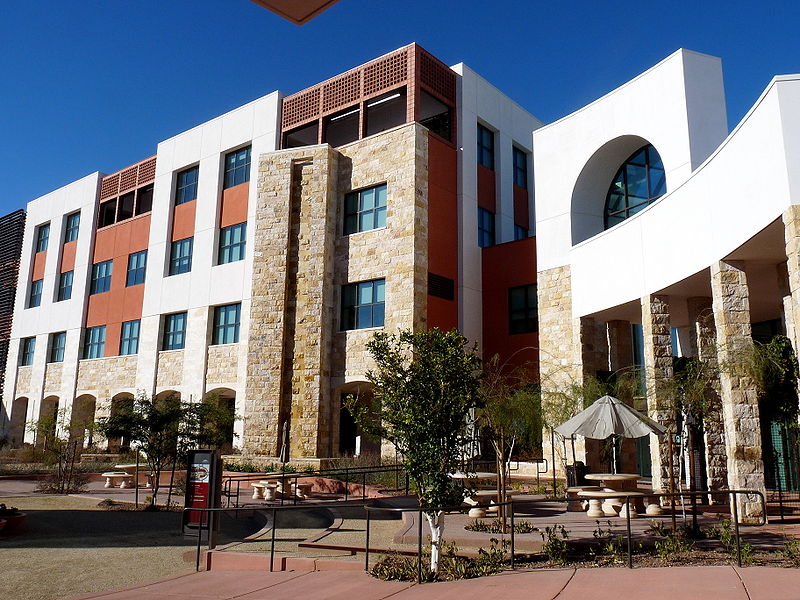
Surprise, located northwest of Phoenix, is one of Arizona’s fastest-growing cities. Originally a small farming community, it has expanded into a thriving suburb with family-friendly neighborhoods, golf courses, and recreational facilities. The Surprise Stadium is a major attraction, serving as the spring training home for the Kansas City Royals and Texas Rangers. The city’s proximity to the White Tank Mountains provides outdoor opportunities for hiking and exploring desert landscapes. With its rapid growth, new housing developments, and expanding economy, Surprise represents the modern suburban boom of Arizona’s metro area.
Interesting Fact:
Surprise was named by its founder, Flora Mae Statler, who reportedly said she would be “surprised” if the town ever amounted to much.




